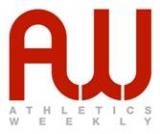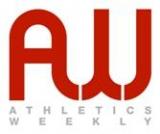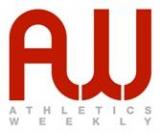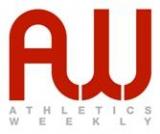Folders |
A workshop with Alberto SalazarPublished by
Coach Alberto Salazar was at a workshop in Birmingham recently and his views are shared by Matt Long and David LowesIt’s late at night on Saturday August 4, 2012, and a 29-year- old Somali-born Brit and a 28-year-old from Portland, Oregon, are jogging around a near-empty Olympic Stadium trying to take in the fact that their lives will never be the same again. Mo Farah has just been crowned the Olympic 10,000m champion and his training partner, Galen Rupp, has taken a fine silver medal. Just as they complete their warm-down with their thoughts turning to their 5000m heats just four days later, they are approached by a man lucky to be alive after suffering a 14-minute heart-stop five years earlier. That man of course is Alberto Salazar and his own Super Saturday” story was told at a recent Running into Athletics” workshop organised by Andy Paul in collaboration with Birmingham City Council. Sharing the stage with Ian Stewart and Geoff Wightman, the three-time winner of the New York Marathon leans forward and says: I put my arm round Mo and Galen and said, ‘Right guys, you ve done the 25-lap race, now it s time for the training session! ” The story goes that what Farah and Rupp said in return cannot be printed, but for the man clad in the all-black tracksuit and Oregon skull cap, it was the look of sheer disbelief on their faces” which he will take to the grave with him! Post-race training sessionsThe two medallists may well have had momentary cause for concern in being the victim of Salazar s practical joke at London 2012 because he reveals that the periodic use of post-race training sessions is a feature of their training regimes. Salazar explains: I normally get them doing hard intervals, which in volume terms total 12-14km. Getting them to sometimes undertake a hard training session after a race gives them more time to recover especially if they are on the racing circuit in the summer. If they have raced on the circuit in a Diamond League and perhaps their next race is only six or seven days away it s no use giving them three days recovery and then hitting them with another hard session because you are only three days away from the next race and they can t recover in time. When I do these post-race workouts with them it s a way of getting more workload in and then allowing them to recover.” Farah and Rupp training togetherSalazar is transparent about his reasons for wanting to work with Farah as part of the Oregon Project. He says: I knew bringing Mo in would develop Galen and this was part of my strategy to develop the top US distance runners.” Pointing to the mentoring role originally played by Rupp, he adds: Mo learned the Oregon system from Galen.” This being said, he is convinced that the subcultural element of group training with Farah joining the group gave Rupp something to chase. Salazar, who has a marathon best of 2:08:13, states: My advice is to train with people better than you because usually they have more knowledge than you.” When asked about the rivalry between his top two runners he laughs before acknowledging: They are such good friends that they realise that trying to beat each other in workouts is pointless. There s only been three or four times when I ve been coaching them that I ve seen them wrongly start to race each other. Believe me, I take them to one side and speak to them and tell them, ‘Hey, that s not what we are about here .” London MarathonAsked about his views on the marathon, Salazar says: You have to remember I grew up in Boston where the marathon was the big event. The marathon was something which I wanted to do from about the age of 16. It was a natural thing for me. Don t misunderstand me, I liked the track, but I always wanted to progress to the marathon.”
Turning to Farah s decision to run at London in April this year, he adds an interesting perspective. Dave Bedford always wanted Mo to do the London Marathon,” he sighs. He raised it with me way back in 2009 when I was over in Birmingham for the World Half-marathon Championships.” With brutal honesty he confesses: When Mo switched to Nike, I never wanted him to do the marathon. I didn t agree with it. It s because when you run a marathon you never know the law of unforeseen circumstances.” He believes Farah simply needed a new challenge and adds: From a motivational point of view you have to remember that Mo had already done so much on the track. The London Marathon this year didn t go well for him and if I m honest part of me was happy. I thought to myself ‘Well at least he s got it out of his system . Mo is a Ferrari and Ferraris don t do well in off-road car rallies. His system as it stands isn t geared for that.” But he refuses to dismiss a return to the event. He says: People forget that it took Haile Gebrselassie and Paul Tergat numerous attempts at the marathon before they actually got it right. Mo is obviously looking at Rio 2016 and you can see how a double over 10,000m and the marathon would be seen to be even greater than what he did over 5000m and 10,000m in London 2012.” Endurance running volumeDespite jogging four miles a day at around 8-9 minutes per mile, Salazar s admission that he injured himself a month or so ago while trying to dash across the grass infield timing his athletes in a session draws laughter from the audience. This led to a more serious debate about volume in endurance training. Salazar, who has a 10,000m PB of 27:25.61, adds: When I was growing up in the 1970s as an endurance athlete, 80-90 miles per week was considered the norm. We have to accept that all sports are more advanced nowadays and in terms of the volume of work undertaken at elite level for a world-class endurance athlete, in reality 120 miles per week is now needed. Mo s longest run for the marathon was 28 miles. I can assure you there s nothing magical about this figure, but psychologically it gave him that extra couple of miles. In addition, I had him do a couple of 24 milers which were not real fast around six-minute miling.” In our next article, we take as our starting point Salazar s preoccupation with biomechanics when an enthralled late night audience and a budding young star-struck athlete was plucked out of the audience and treated to an impromptu training session! This ‘pop-up forum was staged as part of Birmingham City Council s development of its Running into Athletics” programme. The strategic aim is to ensure everyone can access the sport at a level that suits them and can find the support, community, coaching and competitive opportunities that are applicable. More events are planned in the coming autumn/winter period. The City Council is particularly keen to hear from LiRF and CiRF-qualified leaders from in and around Birmingham who would like to know more about the plans being developed. For info email [email protected] The post A workshop with Alberto Salazar appeared first on Athletics Weekly. Read the full article at: www.athleticsweekly.com
|






